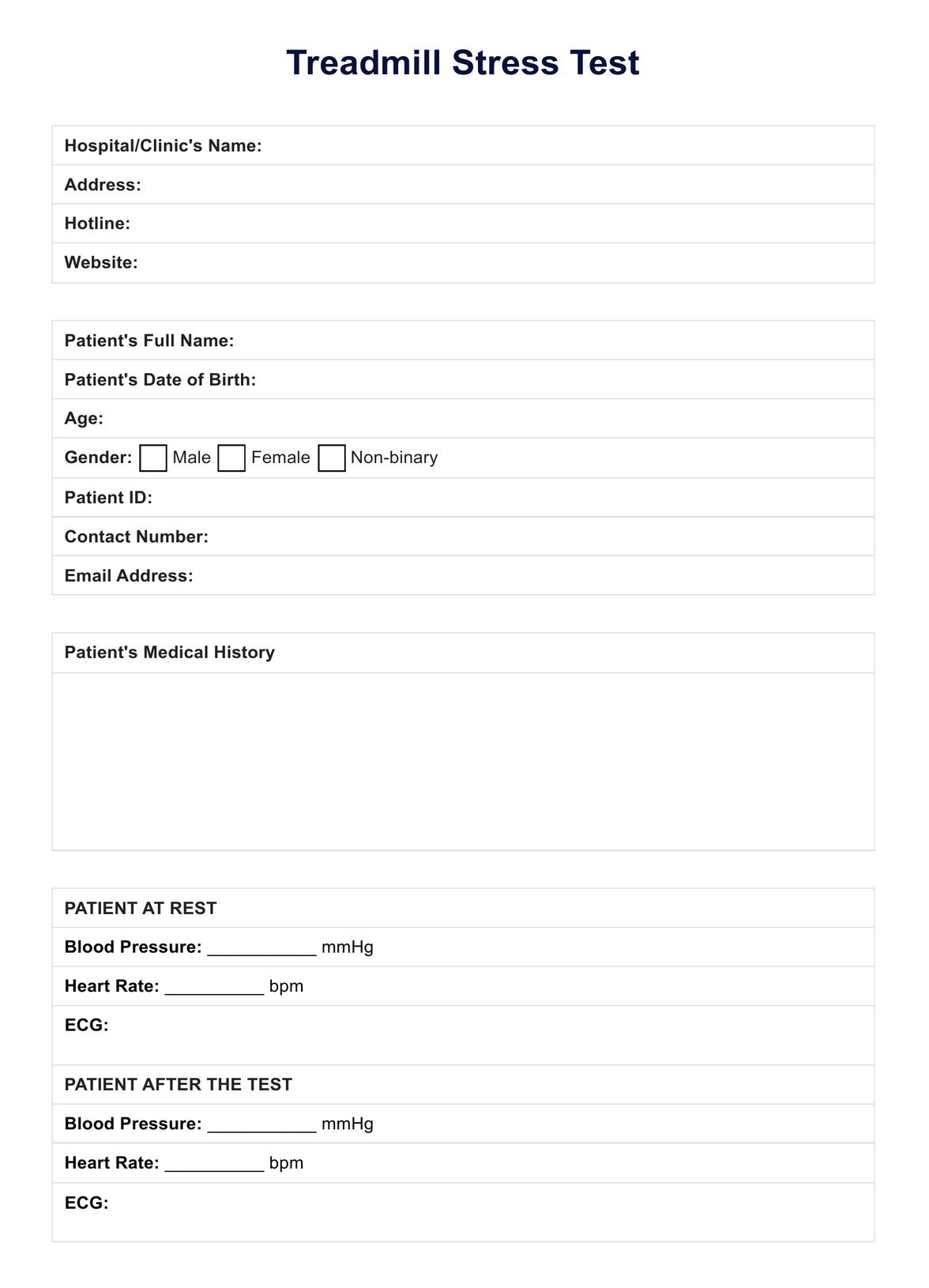The test itself can take 10 to 15 minutes to accomplish. The whole thing, including preparation and recovery from the exercise, can take 30 minutes to an hour.

Treadmill Stress Test
Learn what a Treadmill Stress Test is about and download our template to record patient heart functions!
Treadmill Stress Test Template
Commonly asked questions
Using a treadmill is popular because the required pacing can easily be adjusted while considering the fitness and capabilities of the patient. Healthcare providers can even add an incline if they believe it can help produce better results.
Yes. While the stress caused by jogging on a treadmill can cause chest pain, shortness of breath, dizziness, etc., healthcare providers will monitor the patient at all times. They will immediately stop the test if such signs and symptoms become evident or if the patient mentions them during the test.
EHR and practice management software
Get started for free
*No credit card required
Free
$0/usd
Unlimited clients
Telehealth
1GB of storage
Client portal text
Automated billing and online payments











